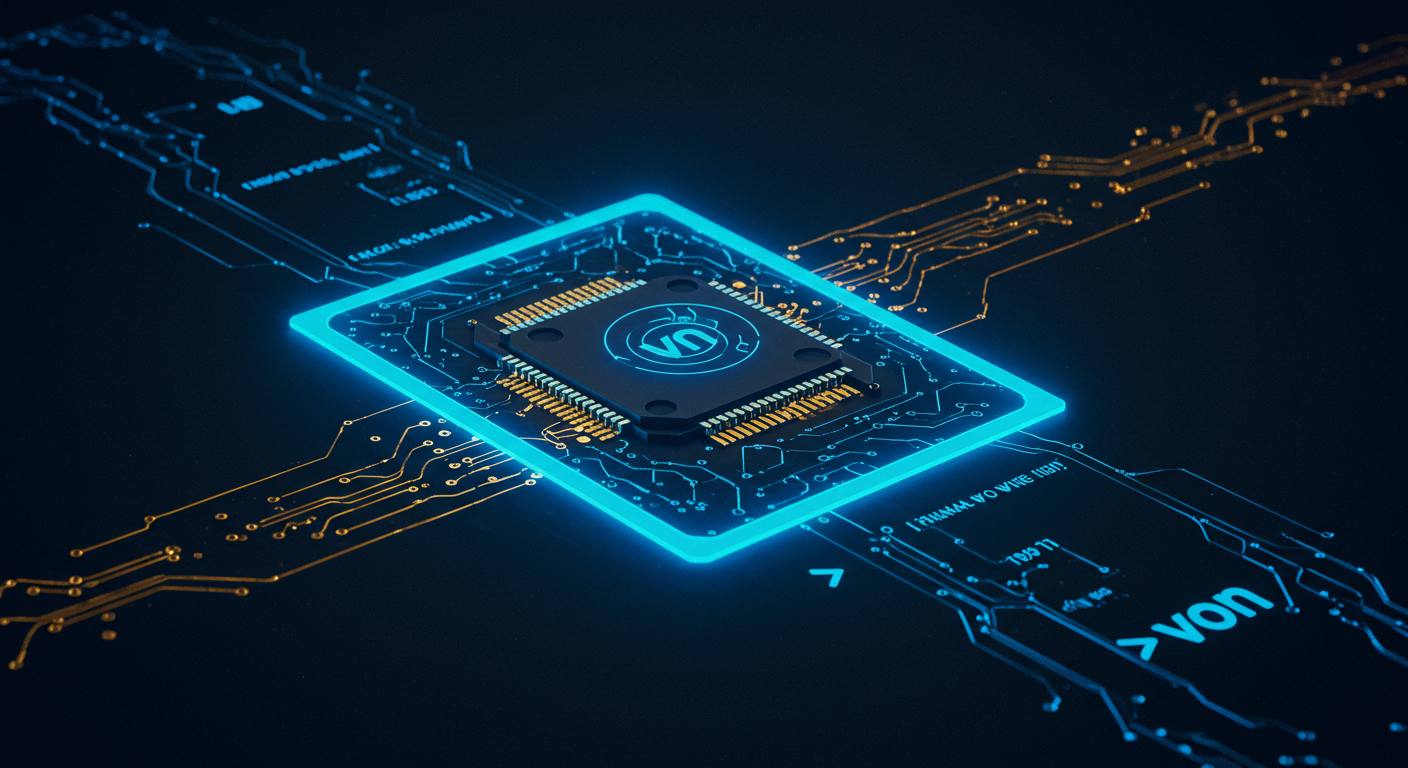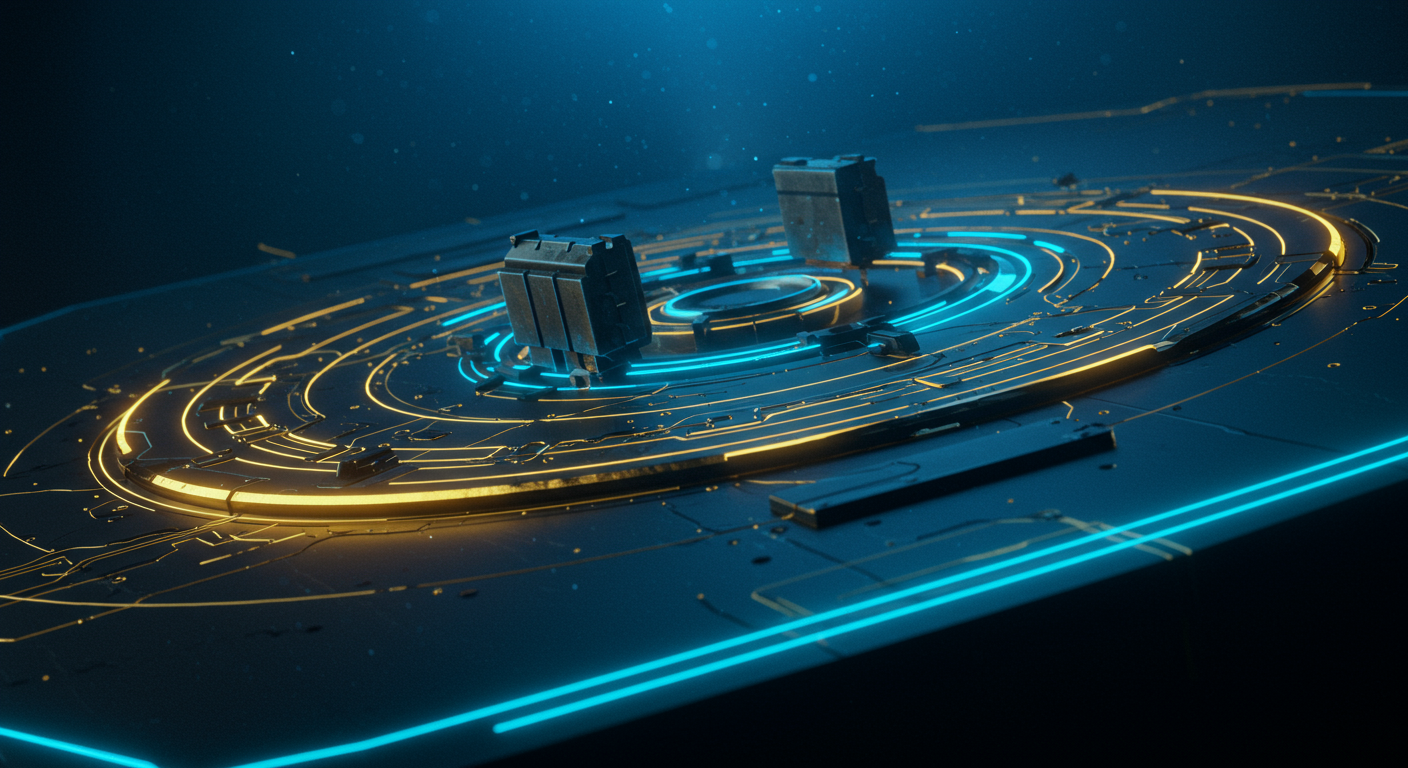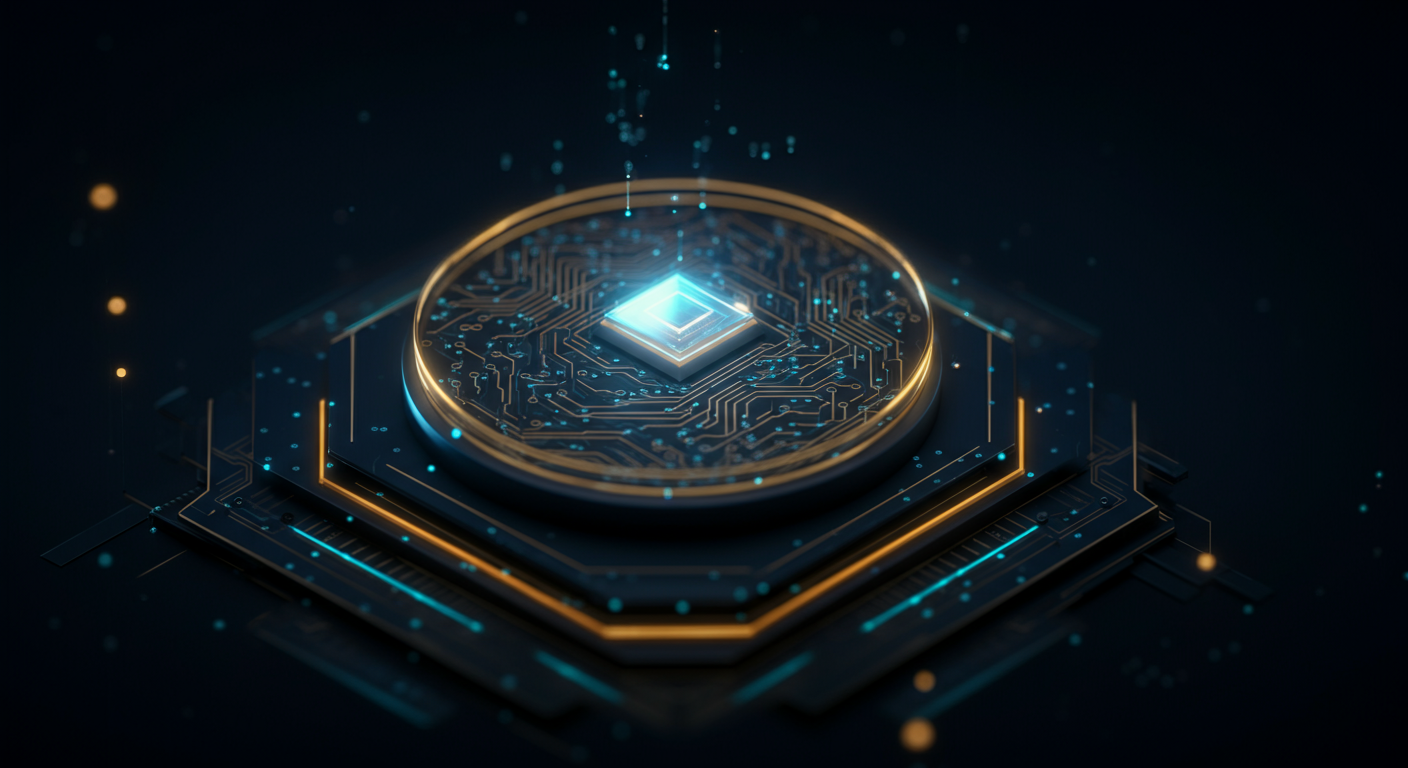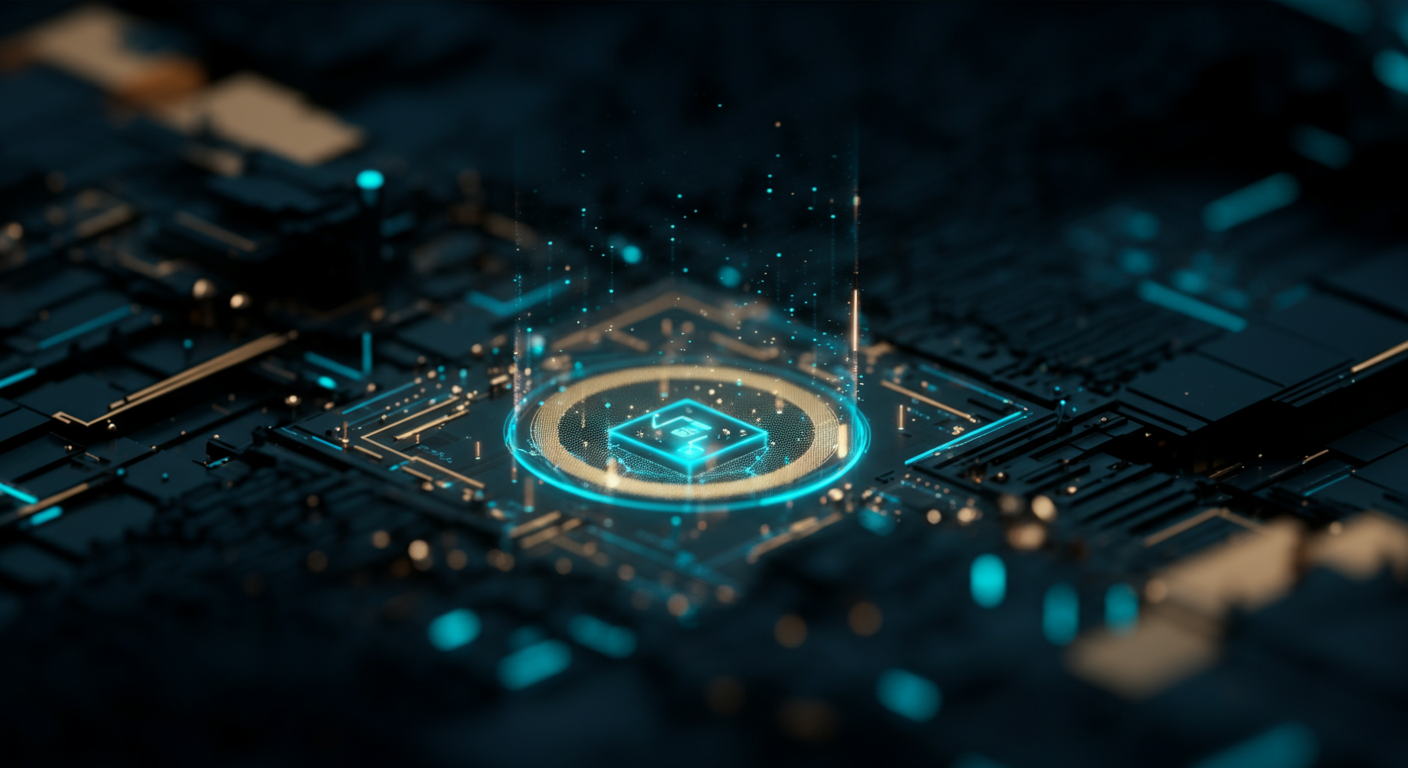StreamTensor: Unleashing LLM Performance with FPGA-Accelerated Dataflows

Introduction: The Bottleneck in Large Language Model Inference
The voracious appetite for Large Language Models (LLMs) is skyrocketing, especially as we push them beyond the data center and onto edge devices.
The CPU/GPU Conundrum
Traditional CPU and GPU architectures are groaning under the weight of these behemoth models, leading to:
- Latency Lags: Imagine waiting an eternity for ChatGPT to respond—not ideal.
- Throughput Throttling: Processing multiple requests becomes a bottleneck; akin to a digital traffic jam.
- Energy Expenditure: Power consumption turns into a real problem, especially for edge deployment.
StreamTensor: Enter the FPGA
Enter StreamTensor, a solution leveraging the power of FPGA ("Field Programmable Gate Array") for LLM inference optimization. FPGA acceleration offers a unique blend of:
- Low Latency: Near-instantaneous responses.
- High Throughput: Handle a deluge of requests without breaking a sweat.
- Energy Efficiency: A green alternative for resource-constrained environments.
Here's how StreamTensor turns LLMs into lean, mean, processing machines.
What is StreamTensor? A Deep Dive into the Architecture
StreamTensor is a game-changer: a PyTorch to FPGA compiler that transforms your AI models into highly optimized hardware dataflows. Forget sluggish performance; this is about unleashing the full potential of your Large Language Models (LLMs) using Field-Programmable Gate Arrays (FPGAs). It efficiently executes compiled PyTorch models by translating them into dataflows specifically tailored for FPGA acceleration, greatly improving their throughput and reducing latency.
Inside the StreamTensor Engine
The StreamTensor architecture has three central components that work together:
- Scheduler: Orchestrates the data flow and computation tasks across the FPGA. It dynamically assigns resources and prioritizes tasks to maximize hardware utilization.
- Memory Manager: Optimizes data storage and retrieval, minimizing bottlenecks by intelligently caching frequently accessed data. This helps avoid excessive memory accesses.
- Dataflow Generator: This is the heart of the StreamTensor architecture overview, transforming PyTorch operations into a dataflow graph ready for FPGA execution.
Streaming for Speed
Think of it like a super-efficient assembly line for LLM intermediates.
Instead of loading entire layers into memory at once, StreamTensor streams LLM intermediates – the results of intermediate computations – directly between processing elements on the FPGA. This cuts down on memory access times and unlocks significant performance gains.
Model Parallelism and Pipelining
StreamTensor expertly manages model parallelism and pipelining by dividing large models into smaller, manageable parts. These parts can then be processed concurrently or in sequence across the FPGA, allowing for parallel processing and high performance. For related concepts, be sure to check out our glossary.
In essence, StreamTensor is the key to unlocking the untapped potential of FPGAs for LLM acceleration. It transforms your PyTorch models into streamlined dataflows, ready to tackle complex AI tasks with blazing speed.
Here's how StreamTensor unlocks unprecedented LLM performance.
FPGA Dataflows: The Secret Sauce to StreamTensor's Efficiency
Imagine orchestrating a symphony, but instead of instruments, it's raw data flowing through specialized hardware – that's the core of dataflow programming, and how StreamTensor unleashes LLM performance with FPGA-accelerated dataflows. StreamTensor translates PyTorch operations into optimized dataflows specifically for FPGAs (Field-Programmable Gate Arrays), which are reconfigurable integrated circuits, that enable you to design custom hardware accelerators.
Dataflow vs. Von Neumann: A Paradigm Shift

Traditional von Neumann architectures execute instructions sequentially, creating bottlenecks, while dataflow thrives on parallelism.
Think of it like this: von Neumann is a single-lane highway, whereas dataflow is a multi-lane expressway designed for peak performance.
Dataflow offers significant advantages:
- Fine-grained Parallelism: FPGAs excel at spatial computing, where operations are mapped directly onto the hardware and executed simultaneously. This drastically reduces latency compared to traditional processors.
- Optimized for Specific Operations: StreamTensor maps specific LLM operations like matrix multiplication and attention mechanisms onto highly efficient dataflows, which translates to blazing-fast performance, especially useful for Software Developer Tools.
- Reduced Memory Access: Data flows directly between processing units, minimizing trips to memory and slashing energy consumption.
PyTorch to FPGA: The StreamTensor Translation
StreamTensor bridges the gap between high-level frameworks like PyTorch and low-level FPGA hardware, which is a machine learning framework that accelerates the path from research prototyping to product deployment. This sophisticated translation ensures the resulting dataflows fully exploit the FPGA spatial computing advantages.
In conclusion, StreamTensor's innovative use of dataflow programming for machine learning and FPGAs promises to redefine LLM performance and efficiency. Let's see how this tech permeates tools like ChatGPT and Bardeen AI in the coming months, and streamline previously cumbersome processes with AI-powered automation.
StreamTensor is blazing trails, showing us how to accelerate the future of AI.
Performance Benchmarks: StreamTensor vs. Traditional Approaches
Comparing StreamTensor to CPU/GPU-based LLM inference isn't just apples to oranges; it's more like comparing a horse-drawn carriage to a hyperloop. StreamTensor, by leveraging FPGA-accelerated dataflows, achieves impressive quantitative results.
Latency: A significant decrease in FPGA LLM inference latency* is consistently observed. For example, StreamTensor can reduce latency by up to 10x compared to traditional server CPUs.
- Throughput: Increased parallelism means higher throughput. Benchmarks often show StreamTensor processing 2-5x more tokens per second on models like Llama-2 compared to optimized GPU setups.
- Energy Efficiency: This is where StreamTensor truly shines. Due to optimized dataflows, energy consumption can be reduced by a factor of 5-8x compared to power-hungry GPUs – a crucial factor in sustainable AI.
Model Specifics and Analysis

These results weren't achieved with toy models. Benchmarking often involves complex LLMs like Llama, and even variations of the GPT family. Specific examples highlight the effectiveness:
For a Llama-2 7B model, expect to see latency figures dropping below 50ms for a single forward pass, whereas a server CPU might struggle to stay below 500ms.
StreamTensor's gains stem from optimized dataflows and parallel processing capabilities inherent to FPGAs. However, it's not all sunshine and roses. Potential limitations include compilation time – converting a model for FPGA execution can take time – and FPGA resource utilization, demanding expertise in hardware design. Despite that, tools for Software Developers are working to make this process easier.
In short, for tasks where low latency and energy efficiency are paramount, StreamTensor performance benchmarks suggest this architecture could be transformative. As AI continues to evolve, expect to see more innovation in specialized hardware solutions.
Harnessing the raw power of LLMs no longer requires a supercomputer, thanks to innovations like StreamTensor.
Edge AI and Robotics: Smarts on the Move
StreamTensor use cases edge AI are rapidly expanding into areas where low latency is paramount.Imagine a swarm of robots performing search and rescue operations in a disaster zone.
Each robot needs to process visual data and coordinate actions in real-time. StreamTensor facilitates this, enabling responsive, on-device intelligence without relying on cloud connectivity.
Autonomous Vehicles: Smarter Cars, Safer Roads
Consider autonomous vehicles navigating complex urban environments. These systems require instant decision-making based on sensor data. FPGA-accelerated dataflows in FPGA accelerated LLM applications ensure split-second reaction times, making roads safer.
Personalized Medicine: Tailored Healthcare at Warp Speed
In healthcare, StreamTensor unlocks possibilities for personalized treatment plans.
- Analyze genomic data at lightning speed
- Process medical images with unprecedented efficiency
- Predict patient responses to medication with greater accuracy
In essence, StreamTensor isn't just about making LLMs faster; it's about making AI more accessible and adaptable, opening up possibilities previously confined to the realm of theoretical physics.
StreamTensor's journey has just begun, but its potential to revolutionize LLM performance is already turning heads.
StreamTensor Roadmap: Beyond the Horizon
The future StreamTensor roadmap focuses on expanding its capabilities:- New LLM Architectures: Expect support for emerging architectures like Mixture of Experts (MoE) and attention variants, ensuring StreamTensor remains adaptable.
- Expanded FPGA Platform Support: StreamTensor aims to be platform-agnostic, accommodating FPGAs from Xilinx, Intel, and potentially even custom silicon.
- Advanced Optimization Techniques: Look for features that automate architecture exploration and hardware-aware compilation, streamlining the deployment process.
The Allure of Open Source
The prospect of open-sourcing StreamTensor to create an open-source FPGA AI compiler is compelling.- Community-Driven Innovation: Opening the platform would foster collaboration, accelerating development and diversifying use cases.
- Accessibility for Developers: An open-source StreamTensor lowers the barrier to entry, empowering developers to experiment with AI hardware acceleration.
- Standardization: Open sourcing it can lead to standardization of AI hardware acceleration. For example, you could use it to build Design AI Tools. This category offers tools that enable designers to quickly create stunning visuals and iterate on design concepts with AI.
Challenges and Opportunities
Making StreamTensor accessible presents its own hurdles:- Ease of Use: Simplifying the toolchain and providing robust documentation are crucial for wider adoption. Think user-friendly interfaces and comprehensive tutorials.
- Hardware Expertise: Developers need not be FPGA experts to leverage StreamTensor. Abstraction and automation are key. Consider those who need Software Developer Tools. These tools automate tasks and enhance productivity, making it easier for developers to integrate AI into their workflows.
Unleash the full potential of your LLMs with StreamTensor, but first, let's get you set up for success!
Diving into Documentation
The official StreamTensor documentation is your primary resource – consider it your Rosetta Stone for navigating this tech; explore function calls, parameter settings, and everything in-between. Start with the official StreamTensor tutorial, which will take you step-by-step through creating your first FPGA-accelerated dataflow.Setting Up Your Development Environment
Think of setting up your environment like tuning a finely crafted instrument; it needs to be just right.- Hardware Requirements: StreamTensor is designed for FPGAs, so you'll need a compatible board. Xilinx and Altera (Intel) boards are popular choices.
- Software Installation: Follow the documentation for installing the StreamTensor libraries and toolchain on your system. This often involves setting environment variables and installing dependencies.
- Example Code: Get your hands dirty with example code snippets – these serve as excellent starting points to adapt and remix!
Community and Support
- Engage with fellow pioneers on the community forums. Sharing problems can often lead to shared breakthroughs!
- Check out GitHub repositories for community-contributed code and examples. Collaboration is key in this rapidly evolving landscape.
Conclusion: StreamTensor – A Paradigm Shift in LLM Acceleration?
Could StreamTensor represent a fundamental shift in how we approach LLM inference? It's definitely worth considering.
The Case for FPGA Acceleration
While GPUs have reigned supreme in AI, FPGAs (Field-Programmable Gate Arrays) offer a compelling alternative:
- Customization: FPGAs are programmable hardware, allowing for bespoke dataflows tailored to specific LLM architectures.
- Efficiency: By optimizing data movement and computation at the hardware level, FPGAs can potentially achieve superior performance per watt compared to GPUs. This contrast is key to understanding the ongoing debate around 'FPGA vs GPU for AI'.
What StreamTensor Brings to the Table
StreamTensor essentially unlocks the potential of FPGA acceleration for LLMs. It boasts features such as:
- Optimized Dataflows: StreamTensor carefully choreographs the flow of data through the FPGA fabric, minimizing bottlenecks and maximizing throughput.
- Ease of Use: While FPGA programming can be complex, StreamTensor aims to abstract away much of the low-level details, making it more accessible to software developers. Software developers can also find support with Software Developer Tools available.
The Future of LLM Acceleration
StreamTensor is a sign of things to come; specialized hardware will play an increasingly important role in the 'Future of LLM acceleration'. As models grow ever larger and more computationally demanding, novel approaches like StreamTensor will become essential.
Explore StreamTensor and see if it can supercharge your own LLM applications.
Keywords
StreamTensor, FPGA, LLM, PyTorch, Compiler, Acceleration, Dataflow, Inference, AI Hardware, Machine Learning, Low Latency LLM, Edge AI FPGA, Model Optimization, AI Compiler, FPGA Dataflow
Hashtags
#AI #FPGA #MachineLearning #LLM #StreamTensor
Recommended AI tools

Your AI assistant for conversation, research, and productivity—now with apps and advanced voice features.

Bring your ideas to life: create realistic videos from text, images, or video with AI-powered Sora.

Your everyday Google AI assistant for creativity, research, and productivity

Accurate answers, powered by AI.

Open-weight, efficient AI models for advanced reasoning and research.

Generate on-brand AI images from text, sketches, or photos—fast, realistic, and ready for commercial use.
About the Author

Written by
Dr. William Bobos
Dr. William Bobos (known as 'Dr. Bob') is a long-time AI expert focused on practical evaluations of AI tools and frameworks. He frequently tests new releases, reads academic papers, and tracks industry news to translate breakthroughs into real-world use. At Best AI Tools, he curates clear, actionable insights for builders, researchers, and decision-makers.
More from Dr.

